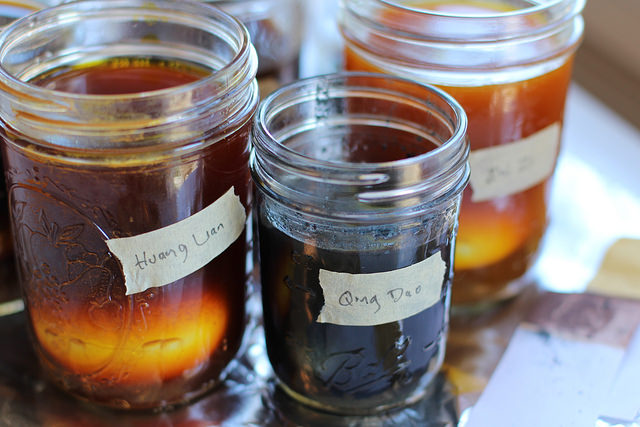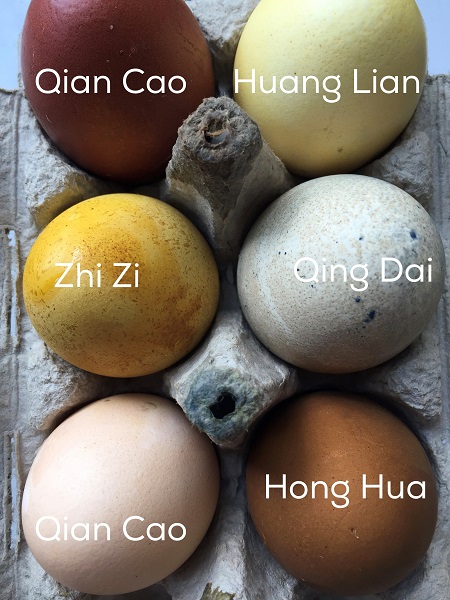Chinese Herb-Dyed Easter Eggs
Working with medicinal herbs, you can’t help but hear about alternate traditional uses. I have long been curious about the coloring power of some of our herbs, so when I came across the usual springtime blogs about using colorful foods as egg dye, I decided to experiment. Here’s what happened.

I researched a few herbs whose English names conjure up brilliant yarn dyed in large outdoor vats: indigo, safflower, madder, goldenthread. These, I hoped, would give me the red, yellow and blue primary colors that I could then mix for secondary greens, purples and oranges. Best laid plans, ahem!
The wonderful thing about nature is it often gives you unexpected results. The one herb I was certain would give rich deep color was Qing Dai (indigo). Not the case. Indigo, I later discovered, is actually a fussy dye that does not dissolve easily and should not be stirred too much as oxygen dissipates its coloring ability. Whisking like mad to get the powder to dissolve resulted in a pale grey with blue specks.
Some herbs, like Hong Hua (safflower), were vibrant when added to water only to darken from bright orange to a simple brown after cooking for just 15 minutes. Others developed deeper more complex color after being boiled, like Qian Cao (madder).

Here is a basic recipe if you’d like to do some experimenting yourself. NOTE: the herbs I chose were based on color, not action. Chinese herbs can have powerful effects. If you plan on eating the eggs, choose the herbs accordingly.
18 grams (roughly 2-3 Tbs) powdered herb
2 cups water
2 Tbs white vinegar
Hard boiled eggs
Mix powdered herb with water and bring to a boil. Simmer 1-15 min depending on herb (see chart below). Strain through a coffee filter, transfer to bowl or jar and add vinegar. Immerse hard boiled eggs until desired color is reached, a few minutes up to overnight in the fridge. Dry on upside down egg carton.
| Hong Hua | cook just until dissolved | light orange to medium brown |
| Zhi Zi | simmer 10 min | golden yellow with brown speckles |
| Qian Cao | simmer 15 min | bisque to russet |
| Huang Lian | simmer 10 min | pale yellow to gold |
| Qing Dai | do not stir, cook until dissolved | pale blue with deep blue speckles |

